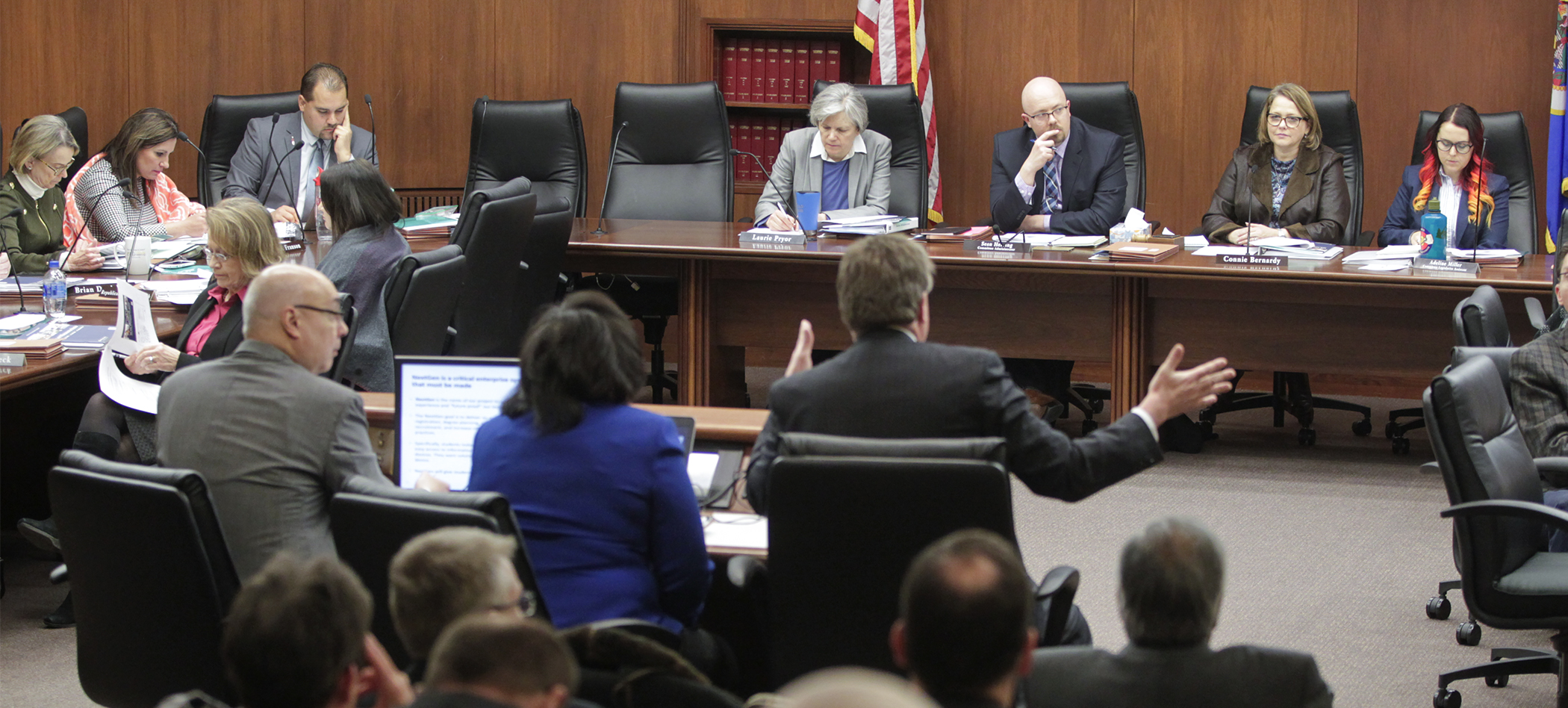Technology the focus Minnesota State’s funding request

Minnesota State says that its technology needs an upgrade.
The system of 30 colleges and seven universities relies upon an outdated computer network for all of its financial, accounting, human resources and student information. Replacing it is a central part of the funding request system officials presented to the House Higher Education Finance and Policy Division Wednesday.
Minnesota State is requesting $37 million over the next biennium to begin replacing its Integrated Statewide Record System with something more mobile-friendly, efficient, effective and secure. It was identified as the most critical element of the system’s $246 million budget request over the next biennium.
“As you consider our request over the coming months,” said Chancellor Devinder Malhotra, “please know that we are well aware that our request would be a heavy lift for you. However, I like to think of it as a powerful request that accurately reflects all we heard again and again from our students and our community partners across the state.”
The largest portion of the request is the $169 million to maintain current programming and largely fund inflationary costs, which Malhotra said will make it possible to avoid increasing undergraduate tuition.
Other expenditures in the request include $25 million for two new grant programs: one geared toward lower-income students, the other to encourage transfers from the system’s community and technical colleges to its seven universities. Another $15 million would address “the workforce gap,” expanding programming that caters to industries with high employment growth and demand.
As for the out-of-date computer system, Ramon Padilla, Minnesota State’s vice chancellor of information technology, said, “It touches everyone and nearly every activity: application, registration, course scheduling, housing, financial aid, transcripts, system finance, accounting, and human resources. But it’s 20 years old, it’s homegrown, and it’s reached the end of its technological life.”
Laura King, the system’s vice chancellor of finance, cited a study showing that Minnesota’s funding of higher education — when measured per full-time-equivalent student — trails the national average and was, in 2017, about two-thirds of what it was in 1997. King also said that state funding provided about two-thirds of higher education costs in 2002 with student tuition providing one-third, and that the split is much closer to 50-50 today.
Related Articles
Search Session Daily
Advanced Search OptionsPriority Dailies
Ways and Means Committee OKs proposed $512 million supplemental budget on party-line vote
By Mike Cook Meeting more needs or fiscal irresponsibility is one way to sum up the differences among the two parties on a supplemental spending package a year after a $72 billion state budg...
Meeting more needs or fiscal irresponsibility is one way to sum up the differences among the two parties on a supplemental spending package a year after a $72 billion state budg...
Minnesota’s projected budget surplus balloons to $3.7 billion, but fiscal pressure still looms
By Rob Hubbard Just as Minnesota has experienced a warmer winter than usual, so has the state’s budget outlook warmed over the past few months.
On Thursday, Minnesota Management and Budget...
Just as Minnesota has experienced a warmer winter than usual, so has the state’s budget outlook warmed over the past few months.
On Thursday, Minnesota Management and Budget...